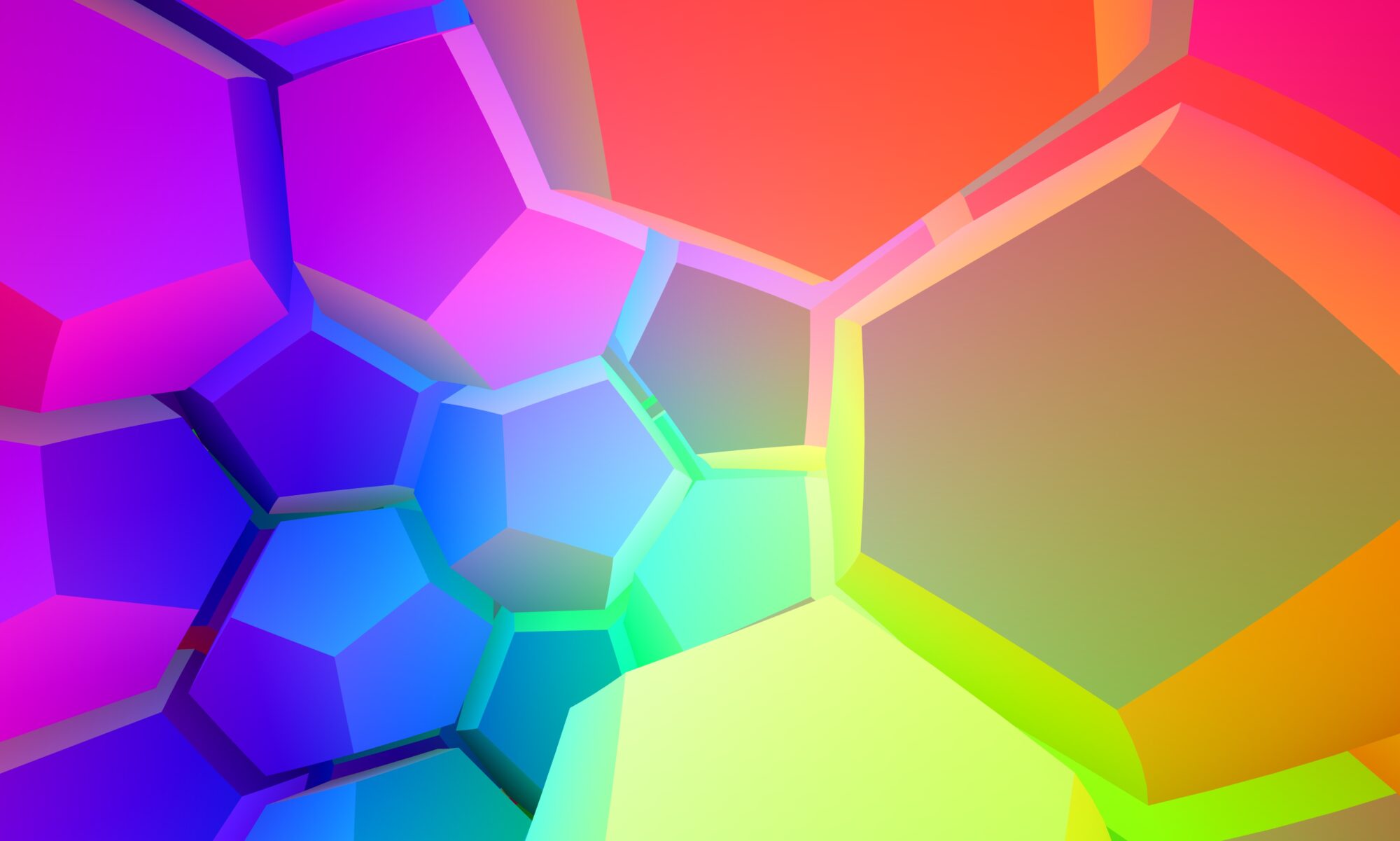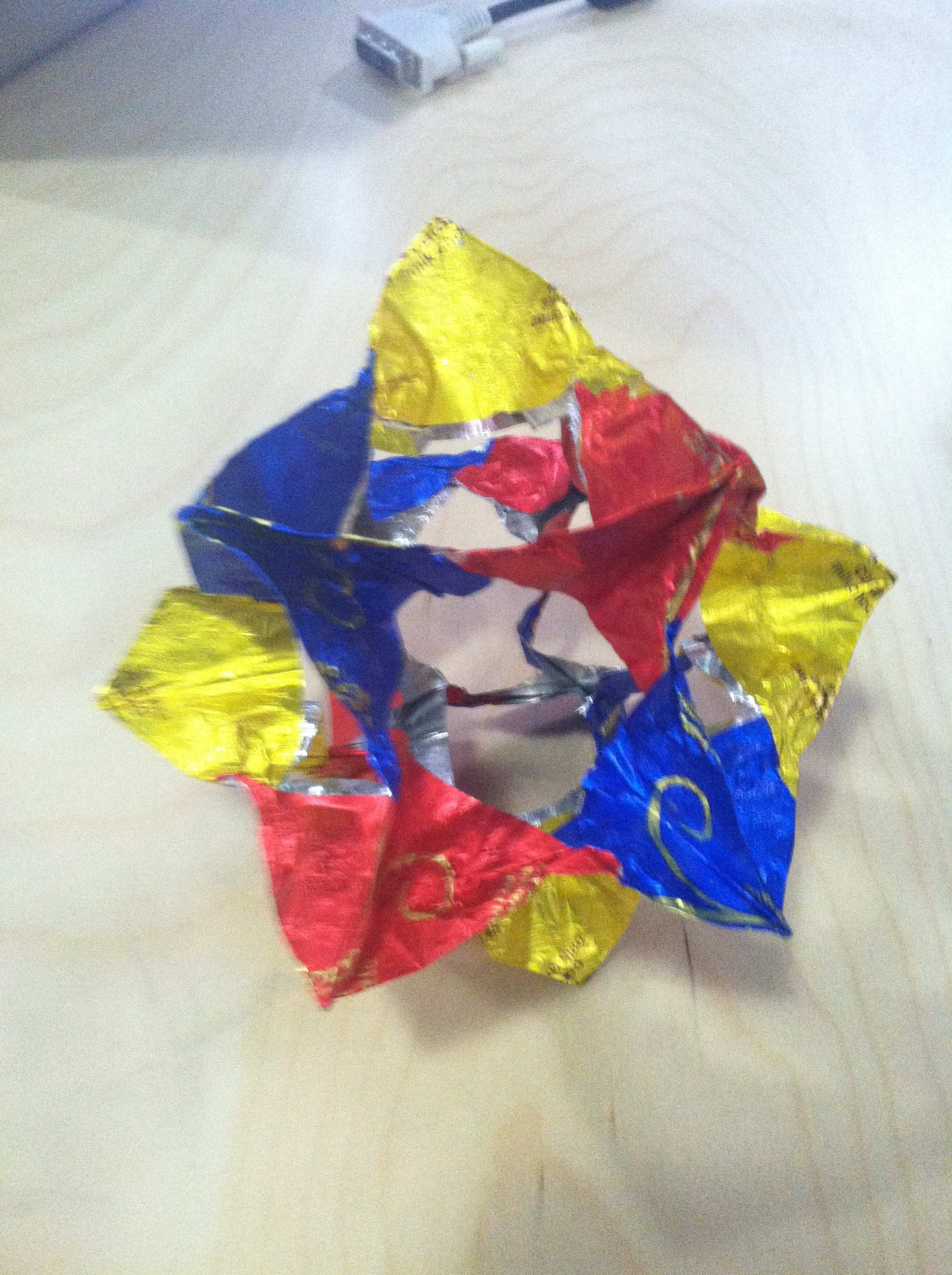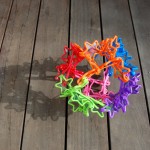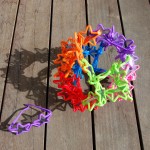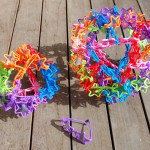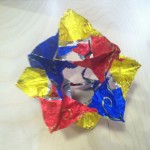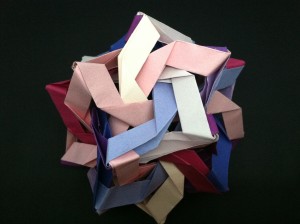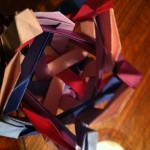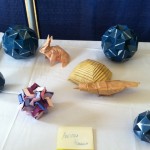often leads to just a crumpled sheet of paper, but occasionally becomes something kind of cool. This bird started out as free folding during late night folding at EBOC and turned out well enough that one person asked if there were diagrams for it.
Things with icosahedral symmetry
often have “small friends” with octahedral symmetry.
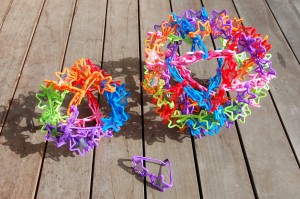
Here are the “small friends” for Seeing Stars and the chocolate wrapper sculpture that I posted earlier. Super cute, although I must admit that I like icosahedral symmetry a bit better in general (perhaps why the other sculptures were made first ^^)
Origami Conventions
are great motivators for finally finishing those models that you haven’t gotten around to. The East Bay Origami Convention was this past weekend, and in addition to teaching my circus elephant, I also had a display with this model that I finally finished the night before the convention.
I’ve had this one floating around in my head ever since I saw George Hart’s Frabjous. It’s made out of 30 identical pieces intertwined as in Frabjous, although the exact shape of the pieces is a bit different, leading to a fairly distinctive end result.
One way of understanding the underlying geometry is to think of each piece as a subset of a rhombic side of the great rhombic triacontahedron, with the subset chosen such that the pieces don’t intersect.
